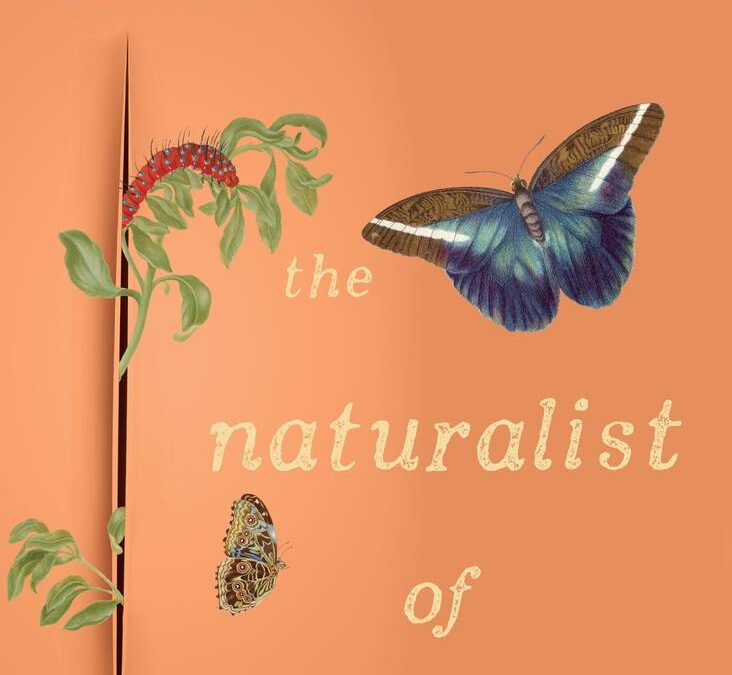Brisbane author Melissa Ashley has made a name for herself with novels that reimagine or rediscover the lives of women overlooked by history, giving these women a voice and a life supported by meticulous research and an attention to detail that breathes authenticity into the pages of her books. Her most recent novel, The Naturalist of Amsterdam (Affirm Press 2023) continues this writing tradition, this time exploring the lives of Maria Sibyilla Merian, an 18th century European naturalist, and more intriguing too, her daughter Dorothea.
Merian is an anomaly in that she gains respect, fame and admiration in a field dominated by men (weren’t they all then?) She collects insects, particularly butterflies and caterpillars, and reproduces exquisite watercolour images of their lifecycles, which she then collates and has printed into much sought after publications that are exciting to all interested in the natural world. A large part of her life was consumed by her fascination of the plants and insects of Suriname, and she made a huge financial and time commitment to travel to tropical South America to study and collect specimens. This resulted in her masterpiece The Metamorphosis of the Insects of Suriname, a huge tome that is highly valued by collectors and ensures her legacy.
But Merian’s ambitions and determined purpose directly affect the choices and opportunities of her family, particularly her daughter Dorothea, who grows up idolising her mother and following in her footsteps – helping her collect specimens and learning not only how to draw and colour, but the steps to platemaking, printing and collating the finished pages into a saleable product. But as Dorothea becomes a young woman, and as the years go by, she begins to sometimes resent the path her mother has set for her, and the narrow options she has for other parts of her life. Other creative pursuits, friendships, love – every aspect of her life is governed by the complete dedication and resolve she commits to her mother and her mother’s work.
There comes a turning point where Dorothea must make a monumental decision: whether to continue to follow her mother’s path, or whether to forge her own way. The pros and cons of both are emotional, infuriating, uncomfortable and difficult. The naturalist of the title is most certainly Merian, but the story is as much, or more, about the decisions and travails of Dorothea, the constraints of the time and the sacrifices women were forced to make to ensure their survival.
Affirm has once again produced a beautiful hardback edition of this book, and similar to Ashley’s previous bestsellers The Birdman’s Wife, and The Bee and the Orange Tree, this edition has gorgeous, coloured endplates of insect and plant life, making it a perfect gift.
Ashley is known for her detailed research and this shines through this book. The chapters cover an intense period and then sometimes the next is several years later – occasionally, when major events have happened off the page and we only read about them in hindsight, I wished for more information about those years. (No spoilers, but one particularly endearing character dies in the interim between two chapters, and I felt the loss more keenly because I had not read of the circumstances until later … but then, perhaps that was Ashley’s intention? To emphasise that loss is shocking and unexpected and that we can never be prepared.) I would have loved even more information about these characters and events.
There is a great balance of insight and internal thoughts weighed against spoken dialogue and action, which allows the reader just the right amount of information needed to understand the plot, but enough white space to imagine what happens off the page. (I realise this sounds contradictory to the previous paragraph…but I lack the skills to elaborate further. You will have to read it yourself to see what I mean.)
The plot is interesting and quite pacy and there are a few twists and surprises along the way. The reader gets to know the characters well enough that we can predict some actions with accuracy, but we are also astonished by some of the revelations. The author’s note at the end is a comprehensive account of the factual scaffolding of the book and answers some of the questions about what happened in real life to the people depicted from 300 years ago (or as much as is known).
Ashley writes with passion and excitement about her subjects, her characters and the time period. Her books impart information in a subtle and interesting way, encouraging readers to think about the lives of women at that time, and how different – or similar – they are to our own.

